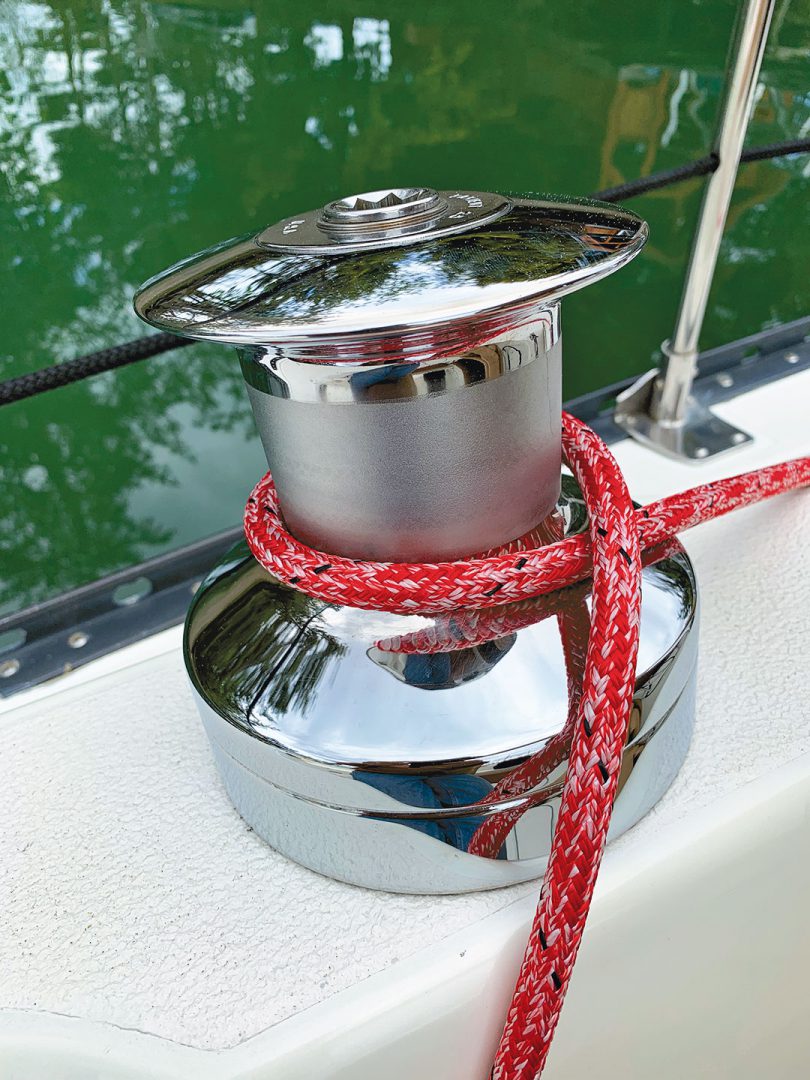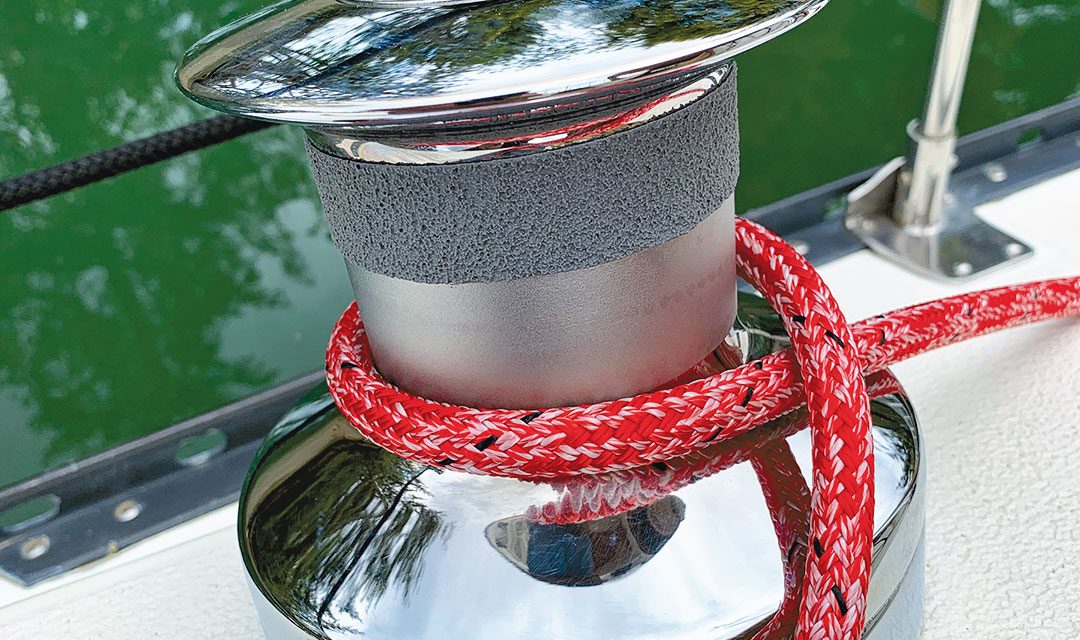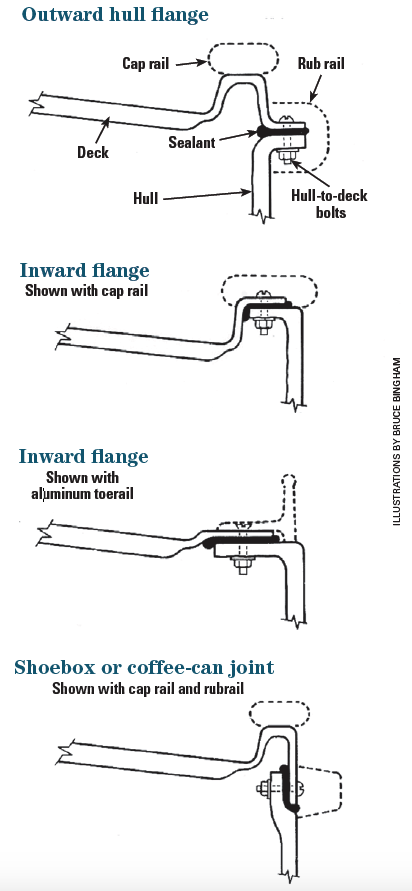A clever application of non-skid tape solves older winches’ friction issues.
Issue 134: Sept/Oct 2020
The two-speed Barient sheet winches aboard Natasha were showing their age. I maintain them, but they’ve been aboard the Islander Bahama 30 since she was built in 1978, and the original etching on the surface of the drum had worn quite smooth. Because of this, I needed more and more wraps to keep the genoa sheet from slipping when the winds picked up.

The re-chromed and re-etched winches looked terrific, but the etching wasn’t deep enough to effectively prevent wraps of the sheet from slipping.
And, the winches looked old, the chrome worn to dull metal. I sent both drums out to be re-etched and re-chromed. They came back looking beautiful, but the new etching is too fine, and the line-slip problem persisted. Replacing the aging sheets had no effect. Wetting the sheets provided some improvement, the moisture creating more friction in the line, but that wasn’t a long-term solution. Replacing the aging Barients with new self-tailing winches was not in the boat budget. There had to be another way.
After a bit of experimentation, I came up with an inexpensive solution that works. I bought a role of 3M Safety-Walk, a non-skid tape designed to be used on steps and other potentially slippery surfaces.

Adding a strip of 3M Safety-Walk tape around the top of the etched section did the trick for preventing line slipping in stronger winds.
I cleaned the drum with acetone and then wrapped a 3-inch-wide strip around the drum where the textured surface would normally be. Sailing trials proved the texture had too much grip; when I wanted to ease the sheets under load, they would not release smoothly, no matter how little tension was applied or how few wraps remained. This was a bit dangerous to the fingers when the tension was high.
I removed the tape and reapplied a piece that was only wide (tall) enough to cover the uppermost inch of the drum. My reasoning is that four or five wraps of the sheet would be required in rising winds anyway, and it might suffice if only the top two wraps reached the tape.
It worked like a charm! In lighter airs, with only two or three wraps around the drum, the 3M tape is not a factor. The line rides the drum just below the edge of the tape. However, when the wind picks up and a fourth or fifth wrap is needed, the non-skid comes into play. The grip is amazing! Very little tension is required on the tail to keep the line from slipping. To release, I simply remove the wraps resting on the tape and then feed the line out smoothly on the bottom portion of the drum.
The tape has withstood a year of sailing abuse on both winches with no sign of failing. Tension on the line applies compression pressure to the material on the drum—the more tension, the more pressure. The self-adhesive feature on the tape has proven its worth. I carry a couple extra lengths of tape but haven’t had to use them yet. Until the boat budget allows for replacement winches, bring on the wind!
Bert Vermeer and his wife, Carey, live in a sailor’s paradise. They have been sailing the coast of British Columbia for more than 30 years. Natasha is their fourth boat (following a Balboa 20, an O’Day 25, and another Islander Bahama 30). Bert tends to rebuild his boats from the keel up. Now, as a retired police officer, he also maintains and repairs boats for several non-resident owners.
Bert Vermeer and his wife, Carey, live in a sailor’s paradise. They have been sailing the coast of British Columbia for more than 30 years. Natasha is their fourth boat (following a Balboa 20, an O’Day 25, and another Islander Bahama 30). Bert tends to rebuild his boats from the keel up. Now, as a retired police officer, he also maintains and repairs boats for several non-resident owners.
Thank you to Sailrite Enterprises, Inc., for providing free access to back issues of Good Old Boat through intellectual property rights. Sailrite.com





